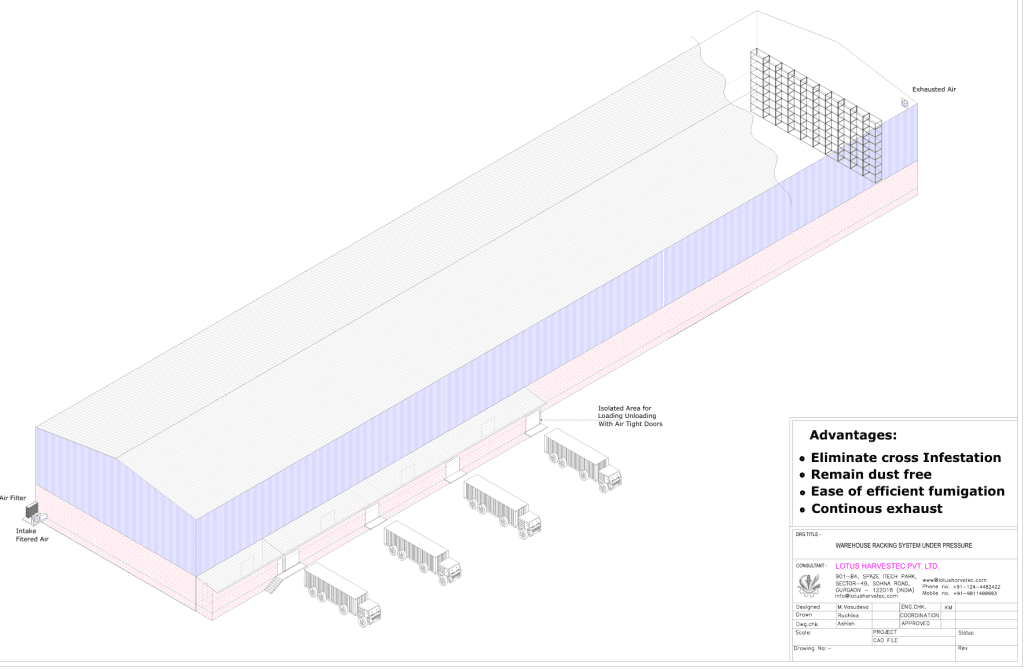In the ongoing efforts by the Ministry of Food to reduce chemical fumigation in the Public Distribution System (PDS), one critical aspect has come into focus—cross infestation in conventional bagged storage warehouses. As a part of the Ministry’s initiative, I’ve been actively involved in discussions exploring alternatives to chemical-heavy practices and improving storage hygiene. These discussions have led to a deeper understanding of how strategic warehouse design can significantly minimize storage losses.
The Core Issue: Cross Infestation
Cross infestation is often the root cause of post-harvest storage losses. Insects migrate between stacks and batches of grain, leading to contamination and compelling storage managers to rely heavily on phosphine fumigation. This recurring exposure not only compromises grain quality but also raises concerns over chemical residues and environmental impact.
But what if we could prevent cross infestation at the source—through warehouse design itself?
Proposed Warehouse Design for Infestation Control
A tentative design was conceptualized to enable efficient mechanization of loading, unloading, and stacking, while also addressing the issue of cross infestation and enabling chemical-free operations. Here’s a glimpse into the proposed structure:
🔹 Airtight Warehouse Building
-
The warehouse is fully airtight to ensure controlled airflow and sealed internal conditions.
-
An isolation zone with double doors is planned at the entry point. This serves as an airlock chamber to maintain internal air pressure while allowing uninterrupted operations.
🔹 Air Circulation & Pressure Control
-
An optimally designed intake fan is proposed to be installed on one side of the building.
-
The fan is rated for a warehouse volume of 150,000 cubic meters (approx. 200m x 50m x 15m).
-
It delivers an airflow of approximately 158,000 CMH while maintaining a pressure of 1 mm of water gauge.
-
Motor rating: 60 HP.
-
The intake air is passed through filters to eliminate the entry of any insects or foreign particles.
-
-
On the diagonally opposite side (roof or wall), an electrically controlled louvre is integrated to:
-
Maintain internal pressure balance.
-
Facilitate night-time cooling while avoiding day-time heat entry.
-
Ensure one-directional airflow, which helps isolate potential infestations.
-
This strategic airflow setup creates an environment where insect movement is disrupted, preventing cross-stack infestation and reducing the need for repeated fumigation.
Scope for Controlled Fumigation
While this design primarily targets infestation prevention, it also opens doors for optimized and safer phosphine fumigation, if required. The airtight nature of the structure allows for controlled, uniform fumigation with minimal chemical usage, thus supporting the broader goal of reducing chemical dependency.
Further technical discussions are planned with fumigation experts to assess the feasibility and safety of integrating such systems within the proposed design.
Acknowledgment
Special thanks to Mr. Raj Kumar Singh of Perkins Blowers Co., Sonipat, Haryana, for his precise calculations and technical expertise in designing the fan system that forms the backbone of this concept.


Exceptional work. This is very well-researched.
Thank you